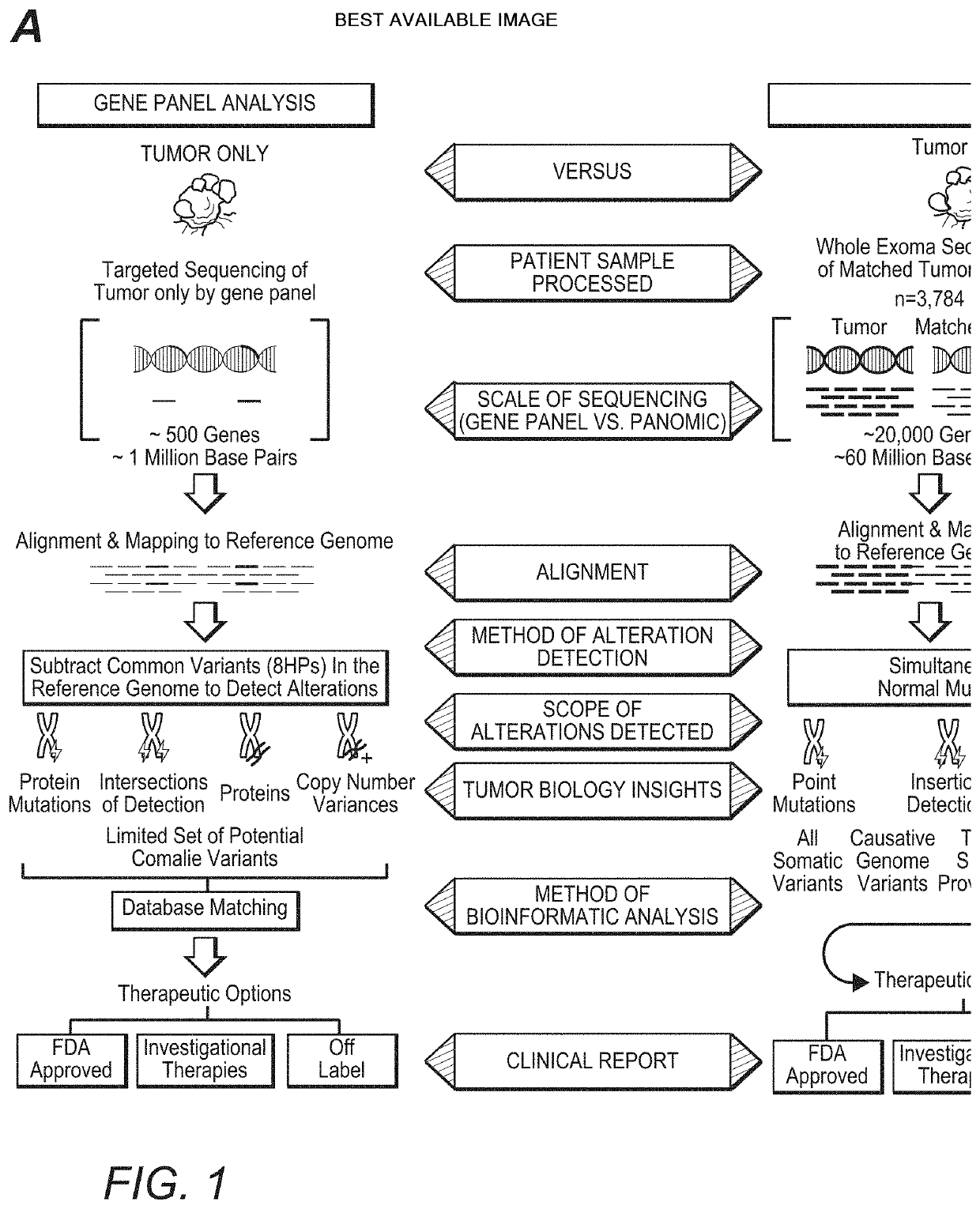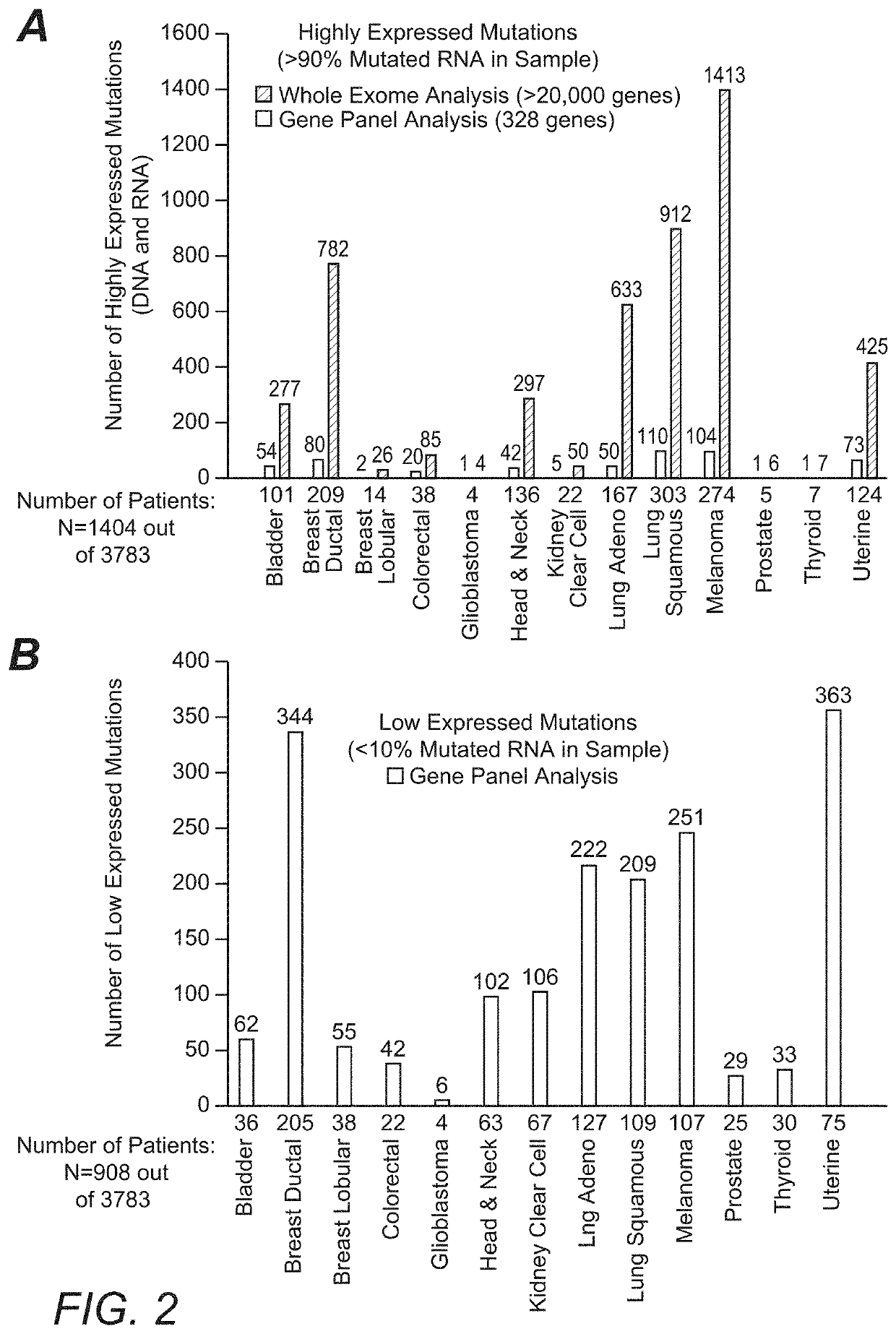High Throughput Patient Genomic Sequencing and Clinical Reporting Systems
a high-throughput, patient technology, applied in the field of high-throughput patient genomic sequencing and clinical reporting systems, can solve the problems of insufficient understanding of the efficacy and proper selection criteria of these new drugs, unsuitable for providing a comprehensive overview of genetic interactions and compensatory mechanisms, and become increasingly difficult to keep up. , to achieve the effect of accurate prediction of the downstream effects of gene alterations and facilitation of identification of key altered regulatory networks
- Summary
- Abstract
- Description
- Claims
- Application Information
AI Technical Summary
Benefits of technology
Problems solved by technology
Method used
Image
Examples
Embodiment Construction
[0027]The inventors have now discovered that the widely held assumption that DNA mutations always give rise to possible downstream protein targets is inaccurate. Indeed, and as is further shown in more detail below, analysis of DNA without confirmatory RNA expression (and RNA sequence information) may lead to false-positive, false-negative, and missed findings, potentially resulting in inappropriate treatment selection.
[0028]For example, the inventors identified such inaccuracies from a large scale 3,784 patient omic data set (DNA and RNA sequencing) covering 19 anatomical tumor types. The data set was processed to detect patient specific DNA variants (i.e., tumor versus matched normal; germline vs somatic) and RNA expression to establish not only the existence but also the expression level of hotspot mutations in the following oncogenes: PIK3CA, KRAS, NRAS, AKT1, BRAF, IDH1, CTNNB1, and IDH2. Of the 3,784 patients in this analysis, 720 (˜19%) were found to have mutations in the onc...
PUM
 Login to View More
Login to View More Abstract
Description
Claims
Application Information
 Login to View More
Login to View More - R&D
- Intellectual Property
- Life Sciences
- Materials
- Tech Scout
- Unparalleled Data Quality
- Higher Quality Content
- 60% Fewer Hallucinations
Browse by: Latest US Patents, China's latest patents, Technical Efficacy Thesaurus, Application Domain, Technology Topic, Popular Technical Reports.
© 2025 PatSnap. All rights reserved.Legal|Privacy policy|Modern Slavery Act Transparency Statement|Sitemap|About US| Contact US: help@patsnap.com



